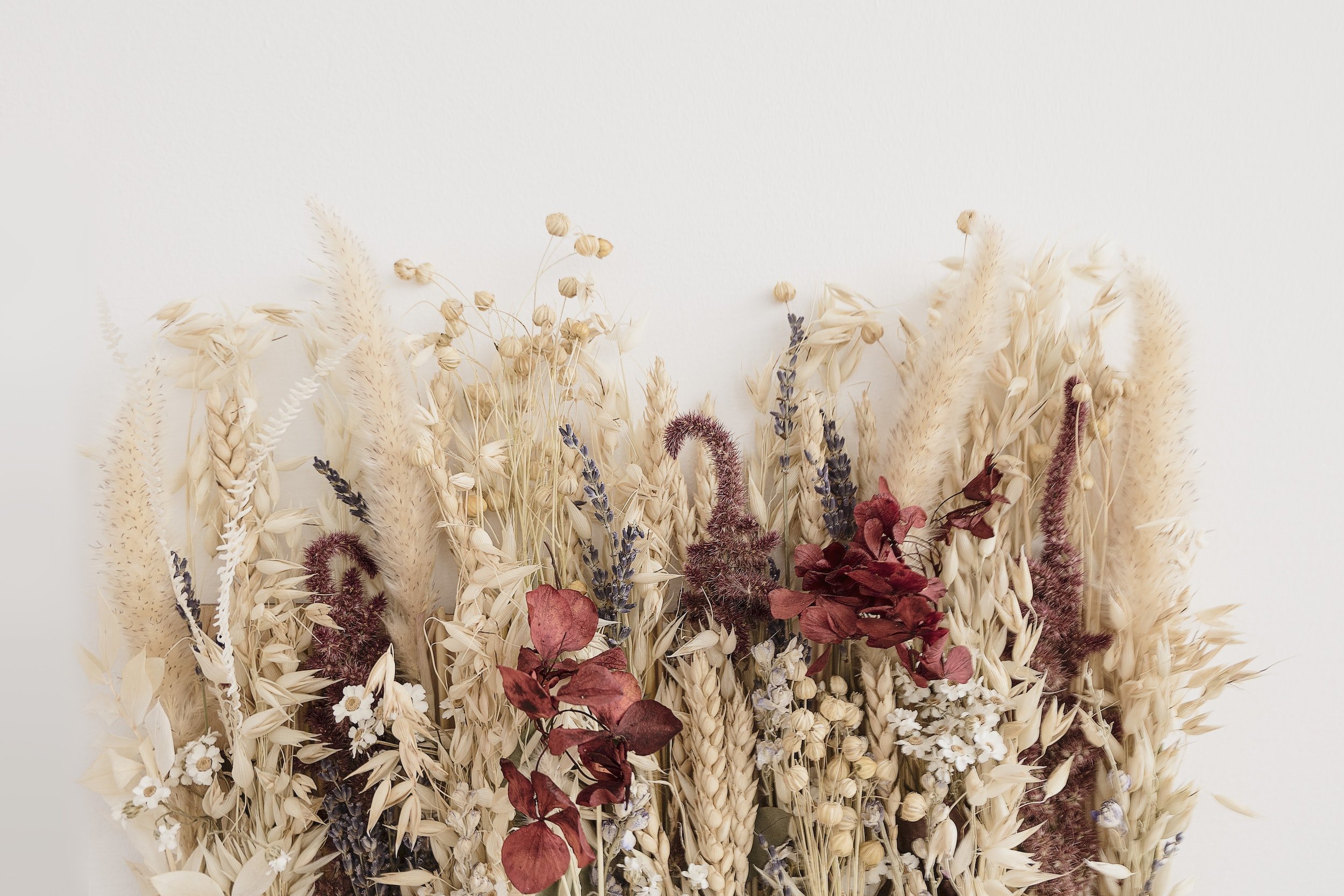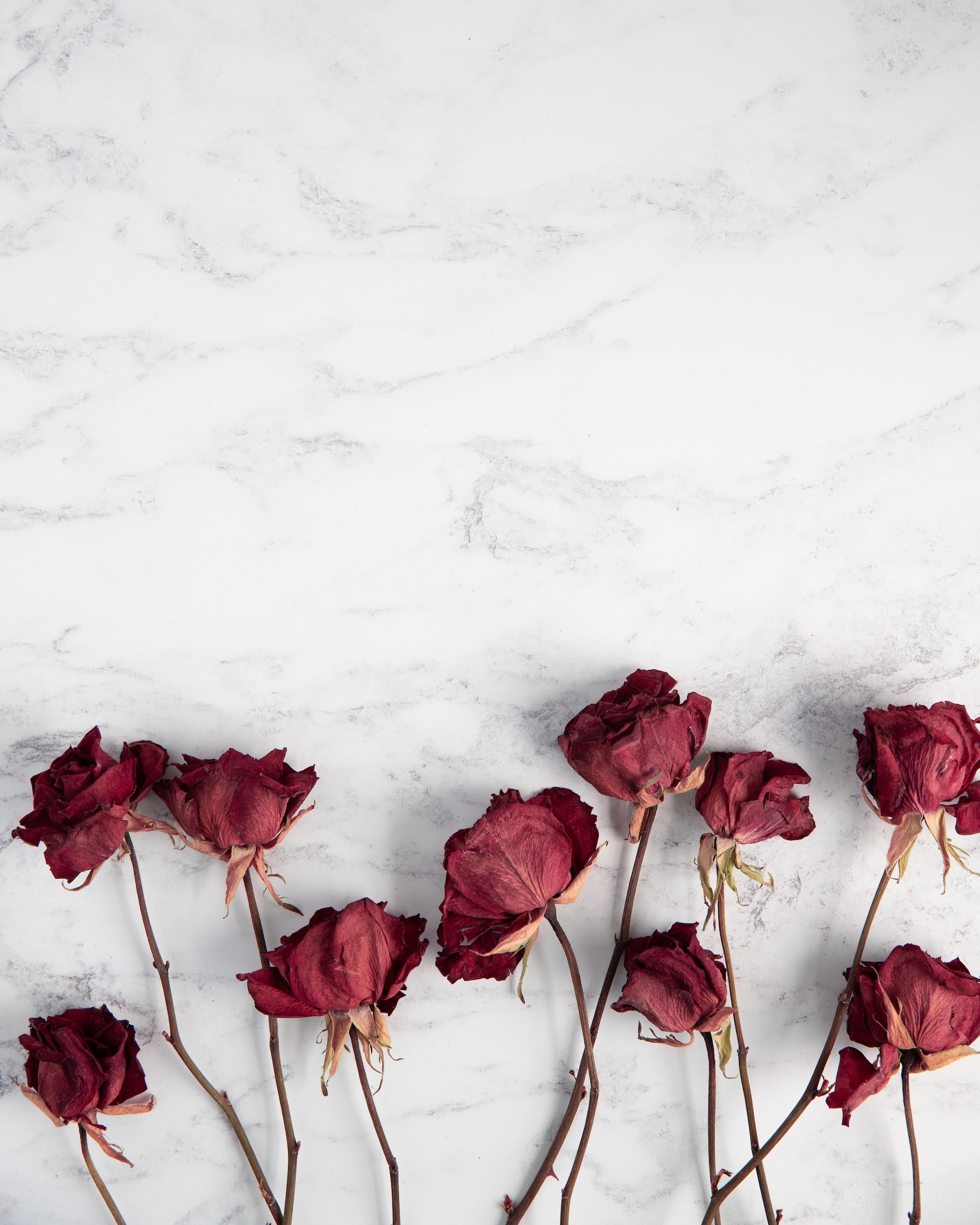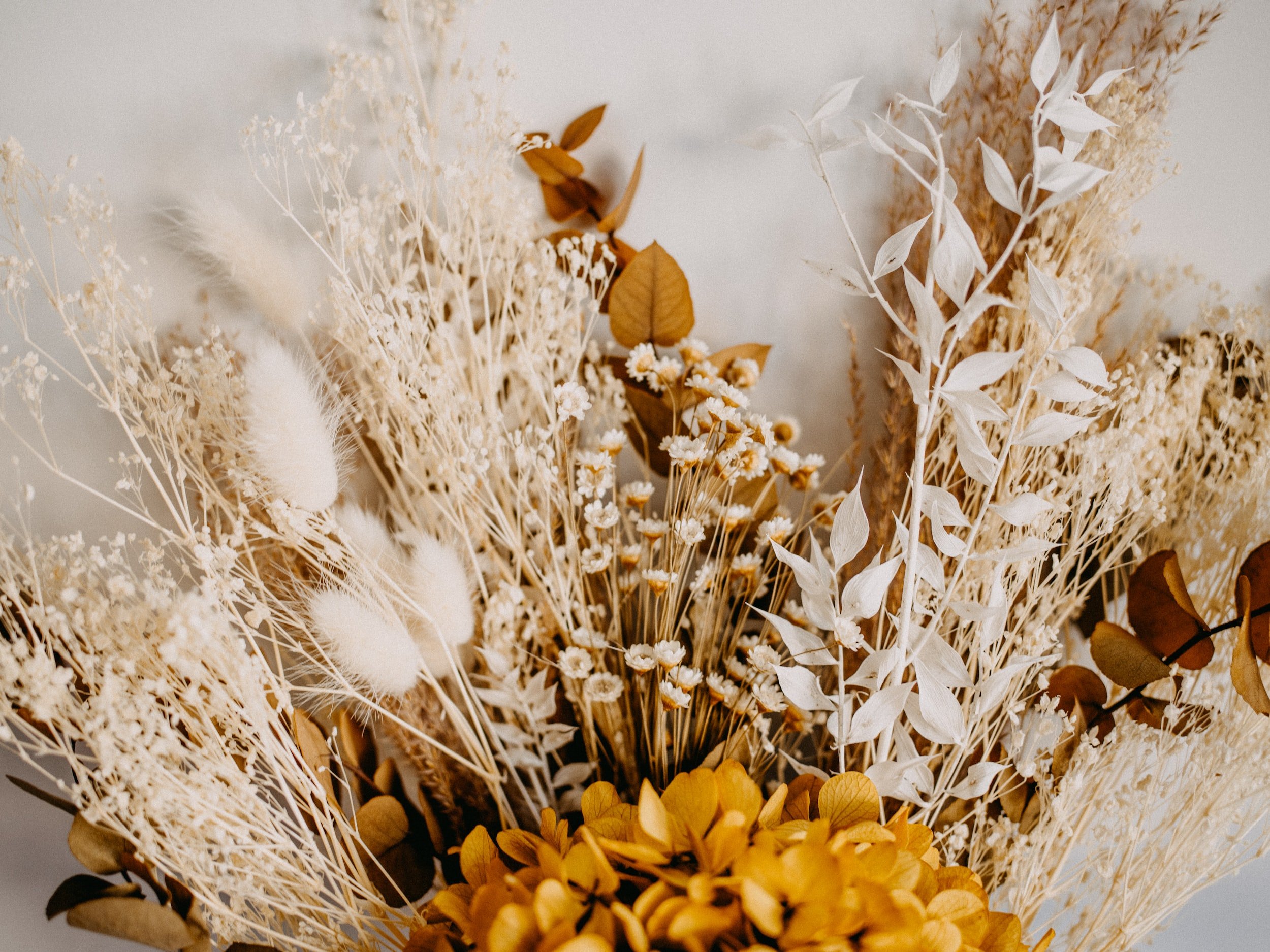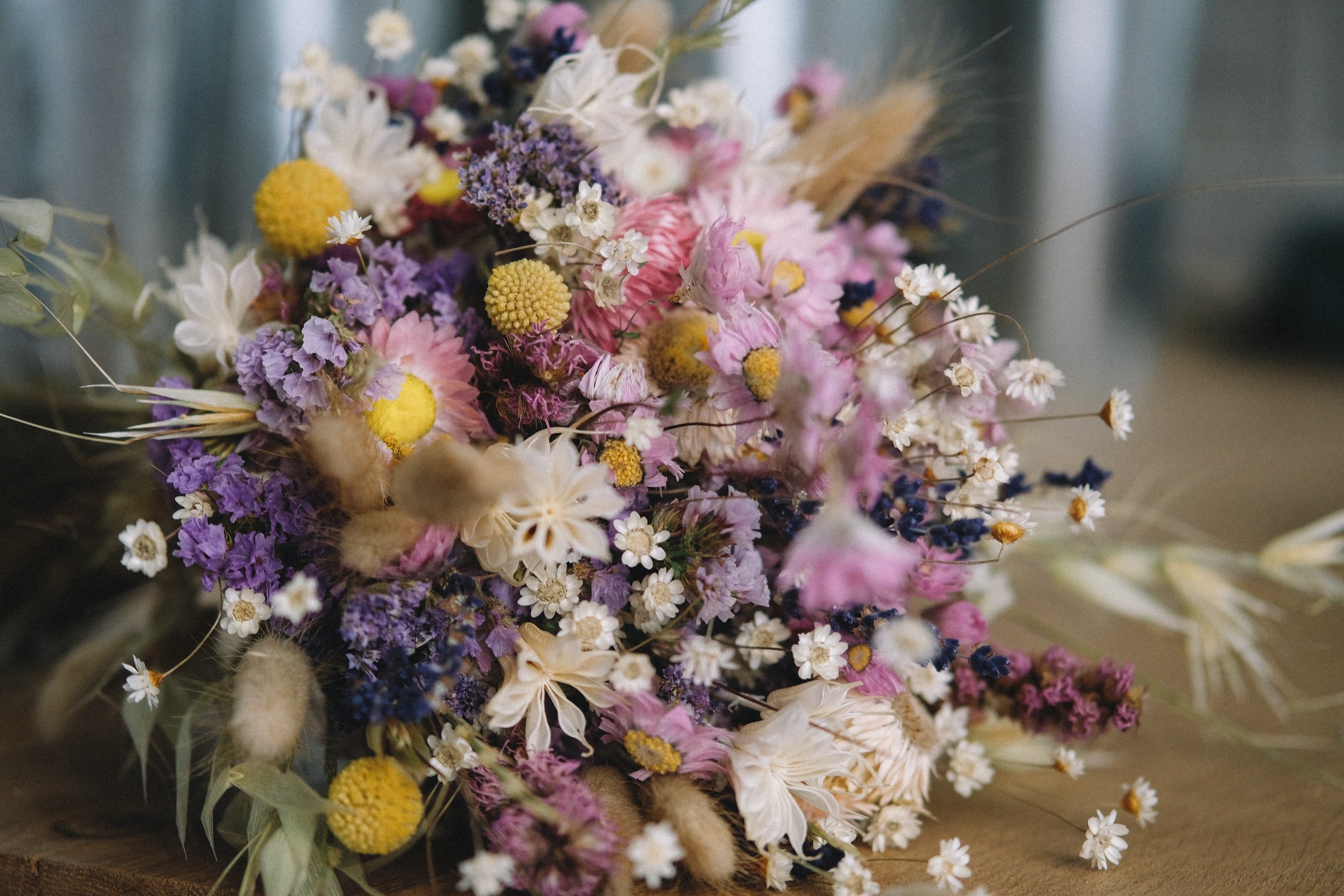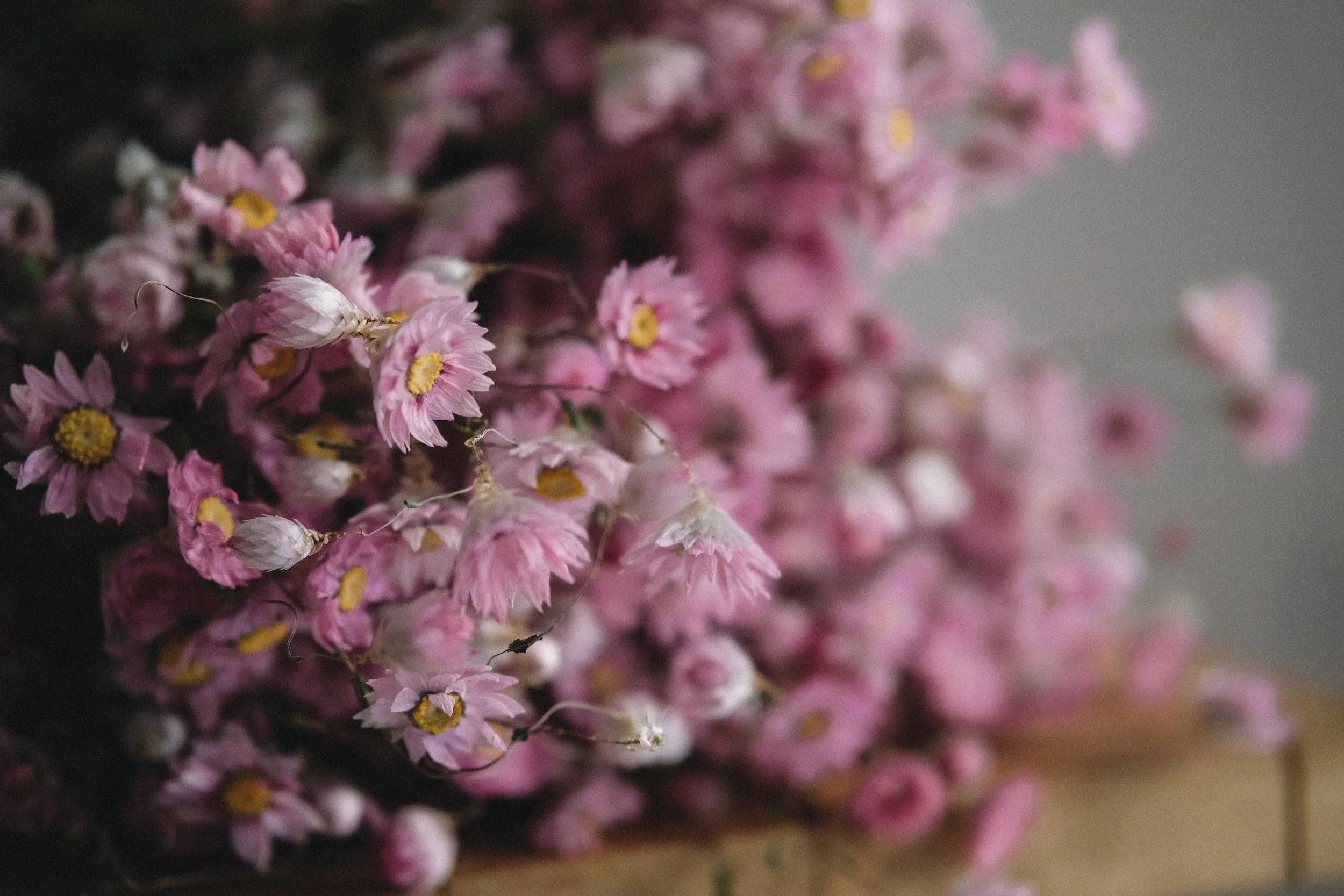How Long Do Dried Flowers Last?
This article has links to products that I may make commission from.
Drying flowers is a great way to preserve their beauty and extend their life beyond their natural blooming period.
Dried flowers are perfect for creating long-lasting flower arrangements or decorative wreaths.
Additionally, drying flowers is a simple and low-cost way to enjoy the beauty of fresh flowers year-round.
Whether you have a garden full of flowers or want to make use of a special bouquet, learning how to dry flowers is a really rewarding skill.
Here we'll cover different methods of drying flowers, tips for choosing the best flowers to dry, and how to properly store and care for your dried flowers to ensure they last as long as possible.
To learn more about drying and preserving flowers, check out my guide:
So, How long do dried flowers last?
Typically, dried flowers can last from several months to several years if they are well-maintained.
The length of time that dried flowers last can vary depending on several factors, such as the type of flower, the preservation process, and storage conditions.
Some flowers, like roses and lavender, have a longer shelf life than others and can last up to several years.
On the other hand, delicate flowers like baby's breath and daisies have a shorter shelf life and may only last for several months.
The preservation process used to dry the flowers also plays a role in how long they last.
Flowers dried by air-drying tend to have a shorter shelf life than those that have been preserved using silica gel or glycerin.
Silica gel and glycerin are effective methods for preserving the flowers' shape and color, which can extend their shelf life significantly.
Proper storage conditions are crucial for extending the shelf life of dried flowers.
Keeping them away from direct sunlight, in a cool, dry place, and in a dark area can help prevent fading and reduce the risk of mold or mildew.
Overall, if you want your dried flowers to last as long as possible, it's essential to consider the type of flower, preservation process used, and storage conditions.
With the right care and handling, you can enjoy your dried flower arrangements for a long time.
Start your own cut flower garden with my guide:
How long do dried roses last?
The length of time that dried roses last can vary depending on a few different factors, such as the method of drying, the storage conditions, and the type of rose.
In general, dried roses can last anywhere from several months to a few years.
If the roses were dried using a drying agent such as silica gel and were stored in a cool, dry place away from direct sunlight, they can last longer than roses that were air-dried or hung to dry.
Additionally, darker colored roses tend to hold their color better than lighter colored roses.
To maximize the shelf life of your dried roses, it's important to handle them with care and avoid exposing them to moisture or direct sunlight.
If you notice any signs of decay or mold, it's best to dispose of the dried roses to prevent any potential health hazards.
To learn more about growing roses, check out my guide:
Tips for Choosing the Best Flowers to Dry
By keeping these tips in mind, you can choose the best flowers for drying and ensure that your dried flowers turn out beautiful and long-lasting.
Choose flowers that are in their prime:
It's best to select flowers that are fully open and in their prime.
This ensures that the petals are at their fullest and have not yet begun to wilt.
Consider the color:
Some flowers dry better than others, so it's important to consider the color and shape of the flower.
Darker colored flowers, such as deep red or purple, tend to dry better than lighter colored flowers.
Look for sturdy stems:
Flowers with thicker stems tend to dry better than those with thin, delicate stems.
This is because they are able to hold up better during the drying process.
Avoid flowers with high moisture content:
Flowers with a high moisture content, such as hydrangeas or lilies, may not dry well and can become moldy or discolored.
Consider the size and shape of the flower:
Some flowers, such as roses or peonies, have large, heavy blooms that may not dry well.
It's best to choose flowers with a smaller, more delicate shape, such as lavender or baby's breath.
For more inspiration, check out my guide:
Dried Flower Preservation Process - How to Keep Flowers Forever
Keeping flowers forever is a difficult task, however, there are a few ways you can preserve flowers and extend their lifespan to enjoy their beauty for a longer time.
There are several methods for preserving dried flowers, each with its unique benefits and drawbacks.
Here are some of the most common methods for preserving dried flowers:
Air-Drying:
Air-drying is one of the oldest and most traditional methods for drying flowers and is low maintenance.
This method involves hanging the flowers upside down in a dry and dark place, allowing the moisture to evaporate naturally.
This process can take several days to several weeks, depending on the flower's size and the drying conditions.
Air-drying is a low-cost method, but it may not preserve the flower's color or shape as well as other methods.
Silica Gel:
Silica gel is a drying agent that can absorb moisture from the flowers, preserving their shape and color.
This method involves placing the flowers in an airtight container with the silica gel, allowing them to dry out over several days.
Silica gel is effective for preserving delicate flowers that may lose their shape or color during air-drying.
This method is also relatively easy to use and widely available.
Here is my recommended silica gel:
Glycerin:
Glycerin is a natural substance that can be used to preserve the flowers' color and texture.
This method involves immersing the flowers in a solution of glycerin and water, allowing them to absorb the solution over several days to several weeks.
Glycerin can be an effective method for preserving flowers that are too delicate for air-drying or silica gel.
However, it is more expensive and time-consuming than other methods.
Pressing:
Pressing is a traditional method for preserving flowers by flattening them between two heavy objects, like books or boards.
This method can take several weeks to several months, depending on the flower's size and thickness.
Pressing is effective for preserving delicate flowers like pansies and violets, but it may not preserve their color or shape as well as other methods.
Here is my recommended flower press kit:
Each preservation process has its benefits and drawbacks, and the method you choose will depend on the type of flower you want to preserve and the final result you are looking for.
Regardless of the method you choose, it's essential to handle the flowers gently and store them in a dry, cool place to extend their shelf life.
Storage Conditions
Proper storage conditions are crucial for preserving the quality and longevity of dried flowers.
Here are some important factors to consider when storing dried flowers:
Avoid Direct Sunlight:
Sunlight can cause the colors of the dried flowers to fade and bleach out.
Therefore, it's essential to store them away from direct sunlight.
You can store them in a dark cupboard, drawer, or closet.
Keep Them Dry:
Dried flowers are highly susceptible to moisture, which can cause mold or mildew to grow and damage the flowers.
Therefore, it's crucial to keep them in a dry place.
Make sure the storage area is well-ventilated and has a low humidity level.
Temperature:
Temperature plays a crucial role in extending the shelf life of dried flowers.
It's best to store them in a cool place with a consistent temperature.
Avoid storing them in areas with extreme temperature fluctuations or high heat, such as near a radiator or window.
Handling:
When handling dried flowers, use a feather duster or soft-bristled brush to dust them off gently.
Avoid touching them with your bare hands, as the oils from your skin can transfer to the flowers and cause discoloration or damage.
Storage Containers:
The type of container you use for storing dried flowers is also important.
Choose an airtight container that will protect the flowers from moisture and dust.
Glass jars or plastic containers with a tight-fitting lid are ideal.
Here are my favorite airtight containers for dried flowers:
By taking care of these factors, you can extend the shelf life of your dried flowers and enjoy their beauty for a long time.
It's important to remember that the shelf life of dried flowers will vary depending on the type of flower, the preservation process used, and the storage conditions.
With proper care and handling, some dried flowers can last for years.
Looking for more garden inspiration? Check out my guides:
Tips on How to Make Dried Flowers Last Longer
By following these tips, you can extend the shelf life of your dried flowers and keep them looking fresh and beautiful for a long time.
Choose the Right Flowers:
Not all flowers are suitable for drying.
Choose flowers that are sturdy and have a low moisture content, such as roses, lavender, or baby's breath.
These flowers will dry more easily and have a longer shelf life.
To learn more about growing roses, check out my guide Companion Plants for Roses: The Perfect Partners.
Dry Flowers Properly:
Proper drying is critical to extending the shelf life of dried flowers.
Make sure to follow the correct drying method for the type of flower you're working with.
Avoid over-drying or under-drying, as this can affect the flower's color and texture.
Use Preservation Techniques:
Using preservation techniques like silica gel or glycerin can help extend the life of your dried flowers.
These techniques help maintain the flower's color and shape, making them look fresh for longer.
Store in a Dry Place:
As mentioned earlier, storing dried flowers in a dry place away from direct sunlight is crucial.
Make sure the storage area has low humidity levels and is well-ventilated.
Handle with Care:
Dried flowers are delicate and can easily break or lose their shape.
Handle them with care, using a soft-bristled brush or feather duster to clean them.
Avoid touching them with your hands, as the oils from your skin can damage the flowers.
Avoid Moisture:
Moisture is the enemy of dried flowers.
Make sure to keep them away from areas with high humidity levels, such as bathrooms or kitchens.
Also, avoid using water to clean them.
For more garden tips, check out my guides:
Dried Flowers vs. Preserved Flowers
While dried flowers and preserved flowers may seem similar, they are actually two different processes that result in different outcomes.
Dried flowers are simply flowers that have been air-dried or dried using a drying agent such as silica gel.
The drying process removes the moisture from the flowers, causing them to shrink and sometimes change color.
Dried flowers are typically more brittle and fragile than fresh flowers and have a lower moisture content, making them less susceptible to decay.
On the other hand, preserved flowers go through a more complex process that involves treating the flowers with a preservative solution to maintain their natural appearance and texture.
There are several methods of preservation, including using glycerin, freezing, or drying with a specialized solution.
The preserved flowers retain their original shape, color, and texture, and can even have a slightly soft feel.
Preserved flowers last longer than dried flowers and can last up to several years with proper care.
They are also more pliable and easier to work with, making them ideal for floral arrangements, wreaths, or other decorative purposes.
When it comes to price, preserved flowers tend to be more expensive than dried flowers due to the more involved preservation process.
However, the investment may be worth it if you're looking for a long-lasting, low-maintenance floral option.
In summary, while both dried and preserved flowers have their advantages, preserved flowers tend to be more durable and longer-lasting, making them an ideal choice for special occasions or as a long-term decorative item.
How long do dried petals last?
The length of time that dried petals last can vary depending on several factors, such as the type of flower, the method of drying, and the storage conditions.
In general, dried petals can last from several weeks to several months.
If the petals were dried using a method such as silica gel and were stored in a cool, dry place away from direct sunlight, they can last longer than petals that were air-dried or hung to dry.
Additionally, darker colored petals tend to hold their color better than lighter colored petals.
To maximize the shelf life of your dried petals, it's important to handle them with care and avoid exposing them to moisture or direct sunlight.
If you notice any signs of decay or mold, it's best to dispose of the dried petals to prevent any potential health hazards.
For more inspiration, check out my guide:
Do dried flowers smell good?
Dried flowers can still retain some of their fragrance after they have been dried, but the intensity of the scent can vary depending on the type of flower and the method of drying.
Some flowers, such as lavender or roses, are known for their pleasant and long-lasting scent, and can still emit a pleasant aroma even after they have been dried.
Other flowers may lose their scent entirely during the drying process or have a less noticeable fragrance.
To enhance the scent of dried flowers, you can add essential oils or other fragrances to them or create sachets or potpourri blends with the dried flowers.
This can help to refresh the scent and provide a pleasant aroma for your home or workspace.
However, it's important to note that the scent of dried flowers may not be as strong as that of fresh flowers, and may fade over time.
Additionally, the scent of dried flowers can be affected by factors such as humidity and temperature, so it's important to store them properly to maintain their fragrance.
Wrap-up
Dried flowers are a beautiful and low-maintenance option for flower arrangements, home decor, or as a gift.
Their shelf life can vary, but with the right storage and handling, they can last from several months to several years.
Remember to keep them away from direct sunlight, in a dry, cool place, and handle them gently.
By following the tips mentioned above, you can keep your dried florals looking beautiful and vibrant for a long time.
Whether you're using them as a decorative item, a gift, or as part of a special event, dried flowers offer a low-maintenance way to enjoy the beauty of nature.
Learn more about How to Store Dried Flowers.
